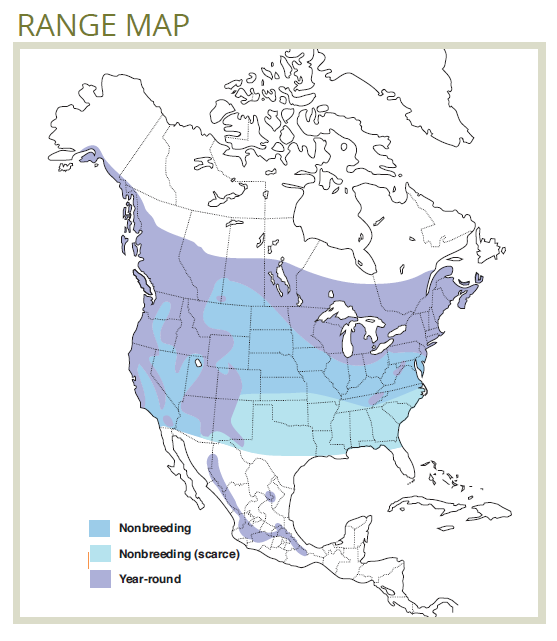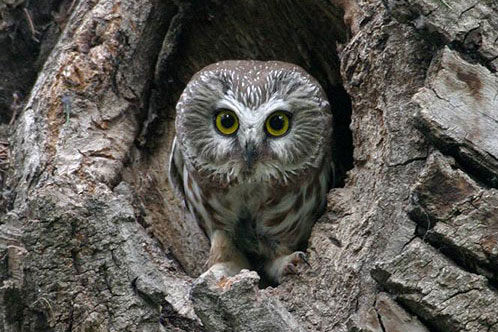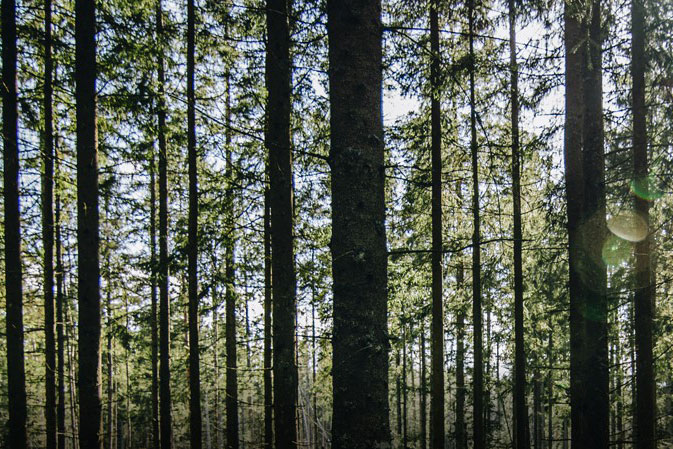The Northern Saw-whet Owl is one of the smallest owls in North America, and also one of the most common in northern forests.
Northern Saw-whet Owl
(Aegolius acadicus)
Habitat Ecology
- The Northern Saw-whet Owl is found in a wide range of forest types but is most common in riparian coniferous forests.1 It is also found in cottonwood, ponderosa pine and Douglas fir forests2 but it is uncommon in subalpine forests.1
- In Alberta’s boreal mixedwood forest, Northern Saw-whet Owls were most common on landscapes with cropland (average = 20%) interspersed with deciduous forest, and were positively associated with soft (vegetated) linear features.3
- This species nests in old cavities excavated mainly by Northern Flickers as well as by Pileated Woodpeckers, meaning large-diameter deciduous trees are an important habitat feature, particularly in coniferous-dominated stands.3,4
- This species begins laying eggs as early as February or March, meaning it may be at risk of incidental take or nest disruption during winter operations. Nests should be protected from early February (BC) or March (Alberta) to the end of July.2,5

Response to Forest Management
- Large clear-cuts without retention and even-aged management are considered important threats to this species as they remove potential nest trees.6
- Retention harvesting or small entries that maintain high densities of cavity trees and hunting perches may have a neutral or potentially positive effect:
- This species hunts from forest edges out into openings and clearings, and has shown positive responses to landscapes containing many openings within dry mixed-conifer forests.7
- Low levels of fragmentation and/or forest clearing may increase prey densities and foraging habitat, but these benefits can be easily outweighed by the negative impacts of perch removal, nest tree removal, and increased predation where fragmentation is high.8
- A nest box study with a low sample size (4 Northern Saw-whet Owls) found this species nesting in deciduous and mixedwood harvested stands with between 20% and 75% dispersed and patch retention.3
Stand-level Recommendations
- Managers should retain patches containing large-diameter trees and snags with cavities, multiple vegetation layers, and natural openings.2
- In dry mixed-conifer forests (e.g., Douglas fir/ponderosa pine), retention patches located on south-facing aspects may provide greater benefits.7
- Nests that are encountered and found to be occupied should be protected using nest buffers of up to 25 m or wider during the critical breeding period (e.g., Feb./Mar. to July).9
Landscape-level Recommendations
- Wet areas including riparian zones, valley bottoms and wetlands are considered beneficial habitat features for the Northern Saw-whet Owl.2 These passive areas likely contribute to overall habitat on the landscape.
- Large tracts of mature and old forest are considered the most important habitat for this species due to the Northern Saw-whet Owl’s use of cavity nests and the natural gap dynamics that occur in older stands.2,10 Managing landscapes within the full range of NRV to ensure representation of these old forests will be important.
- Their positive association with cropland and soft linear features suggests that Northern Saw-whet Owls may be resilient to some habitat fragmentation and will benefit from habitat edges and openings, provided nest trees are available.3
References
- Rasmussen, J. L., Sealy, S. G. & Cannings, R. J. 2008. Northern Saw-whet Owl (Aegolius acadicus), version 2.0. in The Birds of North America (Rodewald, P. G., ed.) Cornell Lab of Ornithology, Ithaca, New York, USA.
- BC Ministry of Forests Lands and Natural Resource Operations. 2013. Guidelines for Raptor Conservation during Urban and Rural Land Development in British Columbia (2013). Victoria, BC. 151 pp. Available online: http://www.env.gov.bc.ca/wld/documents/bmp/raptor_conservation_guideline…
- Domahidi, Z. 2018. Distribution and breeding ecology of boreal and northern saw-whet owls in the Boreal forests of Alberta, Canada. M.Sc. Thesis. Department of Renewable Resources, University of Alberta, Edmonton, AB. 81 pp.
- Cooke, H. A., Hannon, S. J. & Song, S. J. 2010. Conserving Old Forest Cavity Users in Aggregated Harvests with Structural Retention. Sustainable Forest Management Network, Edmonton, AB. 36 pp. Available online: https://doi.org/10.7939/R3JQ0SW3P
- Priestley, L. 2008. The nesting phenology of Northern Saw-Whet Owl and Boreal Owl in central Alberta. Nature Alberta 37: 20–24.
- Environment Canada. 2013. Bird Conservation Strategy for Bird Conservation Region 10 in Pacific and Yukon Region – Northern Rockies. Canadian Wildlife Service, Environment Canada, Delta, British Columbia. 109 pages + appendices.
- Scholer, M. N., Leu, M. & Belthoff, J. R. 2014. Factors associated with flammulated owl and northern saw-whet owl occupancy in southern Idaho. Journal of Raptor Research 48: 128–141. Available online: https://doi.org/10.3356/JRR-13-00049.1
- Hinam, H. L. & St. Clair, C. C. 2008. High levels of habitat loss and fragmentation limit reproductive success by reducing home range size and provisioning rates of Northern saw-whet owls. Biological Conservation 141: 524–535. Available online: https://doi.org/10.1016/j.biocon.2007.11.011
- OMNR. 2010. Forest Management Guide for Conserving Biodiversity at the Stand and Site Scales – Background and Rationale for Direction. Queen’s Printer for Ontario, Toronto, ON. 575 pp.
- Environment Canada. 2013. Bird Conservation Strategy for Bird Conservation Region 9 Pacific and Yukon Region: Great Basin. Canadian Wildlife Service, Environment Canada, Delta, British Columbia. 105 pages + appendices.








